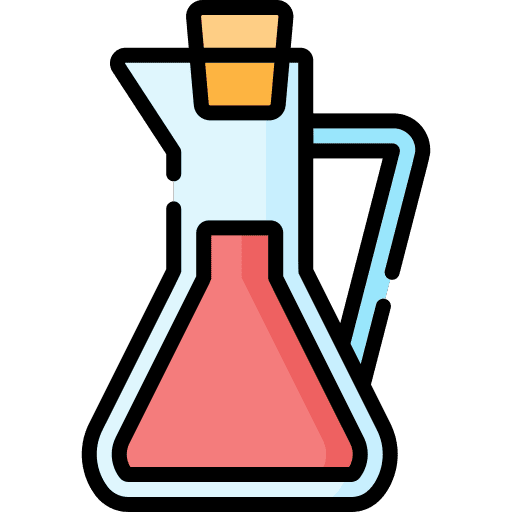Nothing is worse than opening your front load washing machine and getting a whiff of a foul odor. The odor permeates your machine and laundry making it impossible to have fresh smelling clothing. To prevent this smell, you need to know how to clean your front load washer.
Thankfully, it’s easy to learn to clean a washing machine. Just follow the simple advice in the post and you’ll enjoy the fresh-smelling clothes coming out of your machine.
Key Takeaways
- Clean the front load washer by removing gunk from the rubber seal and cleaning it with a bleach mixture.
- Clean the washer drum by washing the detergent dispenser tray and running a hot wash cycle.
- Run a wash cycle with vinegar, baking soda, or bleach to eliminate any remaining musty smell.
- Prevent mold in front load washers by leaving the door open, removing clothes immediately, and using the correct amount of detergent.
Why Does My Front Load Washer Smell Bad?
Front-load washing machines can develop a foul odor. One reason for this smell is using too much detergent in your washing machine. It’s not able to be rinsed away properly and leaves a sludge behind in the machine which can clog the filter and drainage pipe.
Even worse, the sludge is the perfect place for mold and bacteria to grow causing a bad smell in your washing machine.
How to Deep Clean a Front-loading Washing Machine
- Time: 1 Hour
- Difficulty: Beginner
Before you begin to deep clean your smelly front-loading washer, make sure that the machine is empty. If it isn’t, remove all clothing from the machine.
Clean Mold Around Rubber Seal
The first step to deep cleaning your front load washing machine is to clean any mold around the rubber seal.
1. Pull Back the Rubber Seal
Pull back the rubber seal and look for small items, hair, lint, and mold trapped there. This is often the source of the musty smell in your machine.
2. Remove the Gunk
Remove all the small items you find in the rubber seal using a paper towel. This will allow you to remove any hair, lint, buttons, coins, etc. from this area. Once you’ve removed the moldy gunk, wipe around the rubber seal with the paper towel.
3. Make a Bleach Mixture
Now make a beach mixture of 1 cup bleach to 1-gallon water in a small bucket. You will use this solution to clean the rubber seal. Wear rubber gloves to protect your hands.
4. Clean the Rubber Seal
Take a cloth, moisten it with the bleach mixture, and use the cloth to wipe down the seal making sure that you’ve removed all the mildew trapped there.
5. Dry the Rubber Seal
Carefully dry the rubber seal with a clean cloth.
Clean Washer Drum
Now it’s time to clean the washer drum.
1. Wash the Detergent Dispenser Tray
Remove the detergent dispenser tray and any removable attachments from your machine. Next, you will wash the items in warm soapy water before rinsing them. Finally, dry them with a clean cloth before replacing the items in the machine.
2. Run a Wash Cycle
Some high-efficiency washers have a self-cleaning cycle. If yours does, now is the time to use it. You don’t need to add anything to the machine. Just set the washer on the self-clean cycle and start it.
Many machines do not have a self-cleaning cycle. If yours doesn’t, then simply set your machine for a normal load. Turn the temperature to hot before starting the machine.
3. Dry the Machine
When the machine finishes the cycle and the machine is cool, use a clean cloth to wipe down the door, lid, and opening. Leave the machine open to dry.
Run with Vinegar, Baking Soda, or Bleach
If the musty smell is still there, run a wash cycle using the DIY cleaner, vinegar, and baking soda.
To use vinegar and baking soda in your washing machine, first, sprinkle ⅓ cup of baking soda inside the machine where you would normally put your clothing. Then pour 2 cups of vinegar into the detergent dispenser.
Use the self-clean cycle or set your machine for a normal load using hot water.
When the machine is done and cool, dry it with a clean cloth.
Another option is to use bleach. Add ½ cup of bleach to your detergent dispenser and fill the bleach dispenser with bleach. Then run an empty load using warm water.
Never mix vinegar and bleach. This may create potentially lethal chlorine gas causing physical harm to you and your family.
Mildew cleaner, and cleaning, and Borax can also be used to remove mold from your machine.
Place a cleaning tablet or the recommended amount of mildew cleaner in your machine. Run a cycle of hot water to clean your washer.
To clean your machine with Borax, add 2 tablespoons of Borax and 2 tablespoons of washing soda to your front load washer. Use hot water to run the cycle.
Tips for Preventing Mold in Front Load Washers
The best solution for a moldy front-loading washing machine is to prevent the mold in the first place. Here are several tips to follow so you can keep your machine from developing a musty smell.
Leave Door Open After Washing
Mold and mildew grow in a damp environment. So always leave the washing machine door open after washing a load of laundry so that the inside of the machine has a chance to dry.
Remove Clothes Immediately
Remove clothes immediately after washing. This will reduce the amount of moisture in the machine and help keep your clothes smelling fresh after they’re laundered. It also allows you to leave the door open immediately after a wash.
Empty Cleaning Trap
The cleaning trap, or lint filter, collects lint which can grow mold and mildew if it’s not emptied and cleaned every three months. So make emptying the cleaning trap part of your regular routine.
Pull Out the Detergent Tray
Pull out the detergent tray after each use or at the end of the day. This will allow the tray to dry.
Avoid Liquid Fabric Softeners
Liquid fabric softeners are dispensed during the rinse cycle and leave behind a residue in the washing machine. This residue is an excellent food source for mold and bacteria growing in your dark and moist machine.
Use the Correct Amount of Detergent
Use the correct amount of detergent to prevent a sludge of detergent residue, body soil, and lint from being left behind in your machine after washing a load of clothing. This sludge is also a breeding ground for mold and bacteria.














